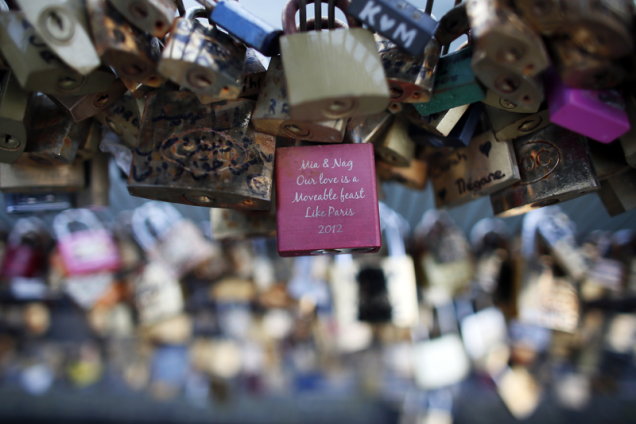And so the locks have been removed from the pont des Arts. Good riddance: they were ugly and attracted dodgy lock merchants to what was once the most elegant bridge in Paris. Also, I found the idea of a lock to symbolise a relationship somewhat grotesque. The rings exchanged at a wedding are a far more suitable metaphor: connected and yet apart, retaining their own identity.
But it got me wondering about locks and who makes them. Think of a lock brand and what comes to mind? For me it’s Yale, instantly. When you go to their website, you see that they have a very strong brand identity, with a powerful black-on-yellow logo. Just looking at it makes you feel more secure. The site is also rather charming, especially the “jargon buster” that helps you identify different types of lock. For a word nerd like me, this was a treasure trove of poetic terms: deadbolt, eurogroove (I would dance to that), hookbolts, mortice, snib, spindle and thumbturn. Even the word locksmith, a maker of locks, is one of the loveliest in the English language. Locks appeal to us in their intricacy, the mystery of their mechanism. You Tube is full of amateurs picking locks. We also think of Houdini, plunging into a river in a chained and locked box, tiny steel picks concealed in his cheeks.
Finally, the talk of locks brought to mind one of my favourite advertising concepts: the writer Sean Trapani’s idea that there are only three kinds of advertising, which he calls Nets, Locks and Erasers. A Net is something you don’t have but aspire to (Nike, or luxury brands). A Lock is something that keeps danger at bay, or makes you feel secure (Volvo). And an Eraser gets rid of your problems (headache? Take an Aspirin).
From a PR point of view, the Paris mayor’s office dealt with the locks issue pretty well. Having been caught in a net by the selfishness of the selfie generation, they explained the inherent danger (45 tons of locks were about to make the bridge collapse) and then offered a convenient eraser: we may turn the locks into a sculpture.
There remains the problem of thousands of keys at the bottom of the Seine. But those will provide a nice puzzle for future archaeologists.




